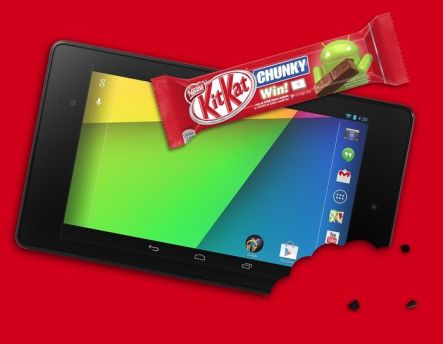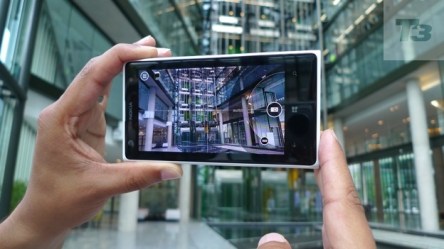The Nexus line offered by Google has created a clear identity; behind each version stands the will to make the best, purest, Android-istic phone, at a price that matches what most carriers and manufacturers would charge with a regular two-year contract. On Halloween Google launched Nexus 5 after months of “accidental” leaks, powered by Android 4.4 Kitkat software. The Nexus line represents Google hardware running on Google software, built by a manufacturing partner (LG), but with Google’s involvement in the creation of the hardware. The result is a 5-inch phone, thinner and lighter than the previous version, quite difficult to use for those with small hands. It’s coated in a soft-touch plastic (not the best choice for a premium phone), with a silky texture that provides just enough friction to keep the phone in hand. The backside has a rounded finish that feels nicely in the palm of the hand and the 130g it weights makes it light enough for a one-hand usage. The rear camera in the top left-hand corner looks and feels odd, bulging the surface and acting as prop when the phone is laid down flat, basically left completely unprotected. The screen is full HD IPS Plus LCD that makes text on websites crisp and easily readable, while photos and videos offer details and intense color. Furthermore, the screen’s brightness makes reading in direct light much easier. The technical specifications feature a 2.3 GHz quad-core Qualcomm Snapdragon 800 processor backed by 2GB of RAM, 16 or 32 GB of storage (no micro SD slot for expansion), 8MP rear camera with OIS (optical image stabilization) and a 1.3MP front camera. The HDR (high dynamic range) function helps produce greatly improved detail and color in photos. Based on these, the phone is as...
Windows 8 Pro
Better for Businesses
According to NotebookReview.com, Windows 8 is receiving a higher approval rating than Apple and Android operating systems. Based upon consumer feedback, of roughly 10,500 comparisons between the iOS 7 and Windows 8, 63 percent favored Windows. Of nearly 7,300 comparisons to the Android OS, almost all favored Windows 8. If you haven’t caught up on what’s new, now is the time. Windows 8 has made the upgrades that one would expect: 4th generation Intel® Core™ and Intel® Atom™ processors that deliver speed without bulk; the operating system is compatible with the new 8” tablet which offers mobile computing at its best; and the system syncs across several devices making it easier for professionals to stay organized on the go. And there are plenty of nice touches, such as a revamped touch keyboard and various tile sizes to help us visual learners. Users can now control some apps, such as media players and Skype, from the lock screen. The pro system comes with its own benefits. It caters to multitaskers, providing improved multi-monitor support and easy access tools. There are also additional upgrades that are worth their weight in gold. Security Most of us remember when Windows became synonymous with viruses. The company aims to change that, boldly stating that “Windows 8 is 21 times more secure than Windows XP and 6 times more secure than Windows 7.” For starters, Windows 8 Pro now has Trusted Boot, which initiates anti-malware software at startup before any third-party drivers or apps. Even when employees click an unsavory banner, it will be more difficult for malware to take hold of your system. Windows 8 Pro has also jumped on the fingerprint credentials express train, helping to keep your sensitive information secure from guests and unauthorized users. Pro helps...


